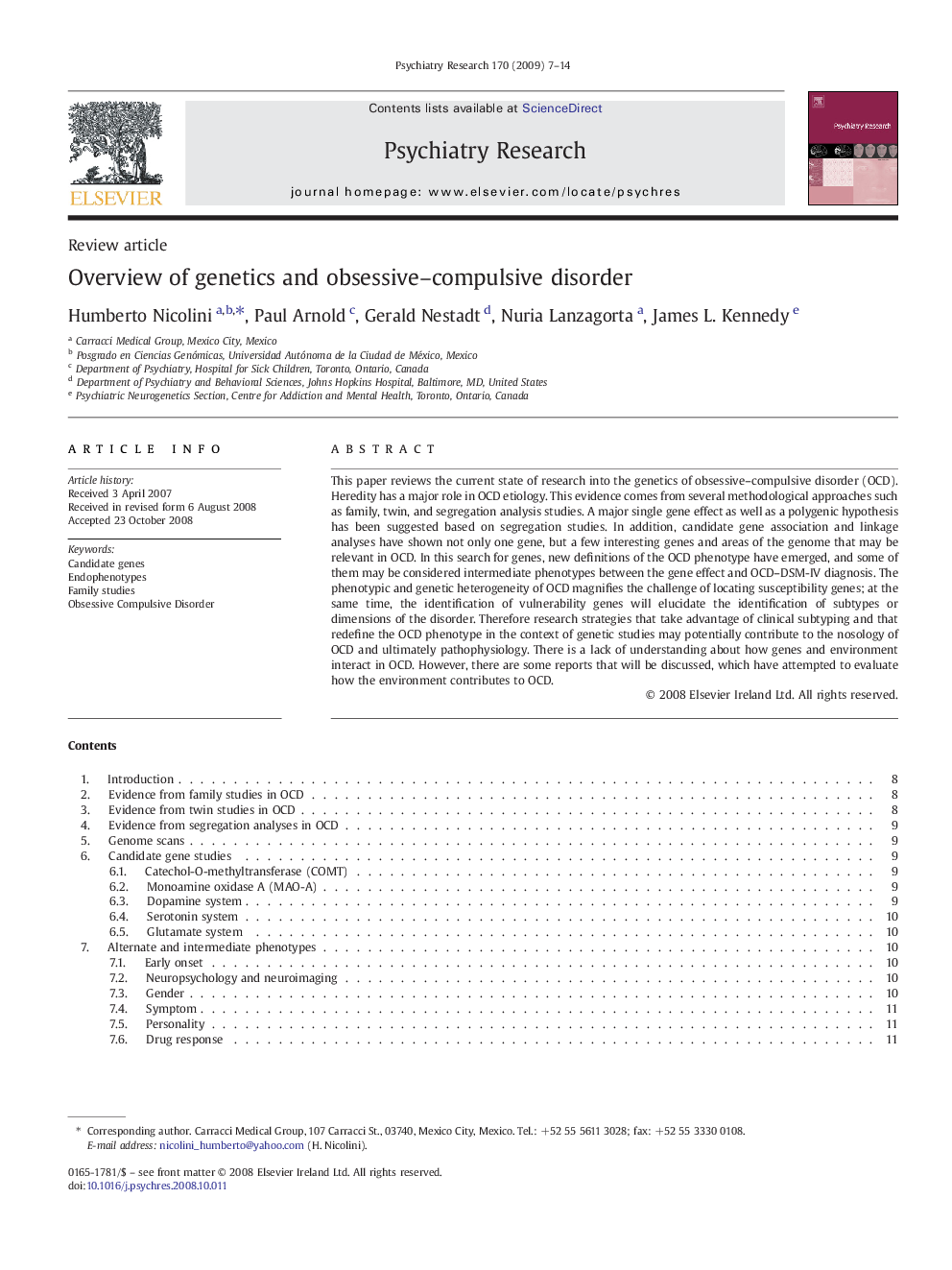| کد مقاله | کد نشریه | سال انتشار | مقاله انگلیسی | نسخه تمام متن |
|---|---|---|---|---|
| 334013 | 546003 | 2009 | 8 صفحه PDF | دانلود رایگان |

This paper reviews the current state of research into the genetics of obsessive–compulsive disorder (OCD). Heredity has a major role in OCD etiology. This evidence comes from several methodological approaches such as family, twin, and segregation analysis studies. A major single gene effect as well as a polygenic hypothesis has been suggested based on segregation studies. In addition, candidate gene association and linkage analyses have shown not only one gene, but a few interesting genes and areas of the genome that may be relevant in OCD. In this search for genes, new definitions of the OCD phenotype have emerged, and some of them may be considered intermediate phenotypes between the gene effect and OCD–DSM-IV diagnosis. The phenotypic and genetic heterogeneity of OCD magnifies the challenge of locating susceptibility genes; at the same time, the identification of vulnerability genes will elucidate the identification of subtypes or dimensions of the disorder. Therefore research strategies that take advantage of clinical subtyping and that redefine the OCD phenotype in the context of genetic studies may potentially contribute to the nosology of OCD and ultimately pathophysiology. There is a lack of understanding about how genes and environment interact in OCD. However, there are some reports that will be discussed, which have attempted to evaluate how the environment contributes to OCD.
Journal: Psychiatry Research - Volume 170, Issue 1, 30 November 2009, Pages 7–14